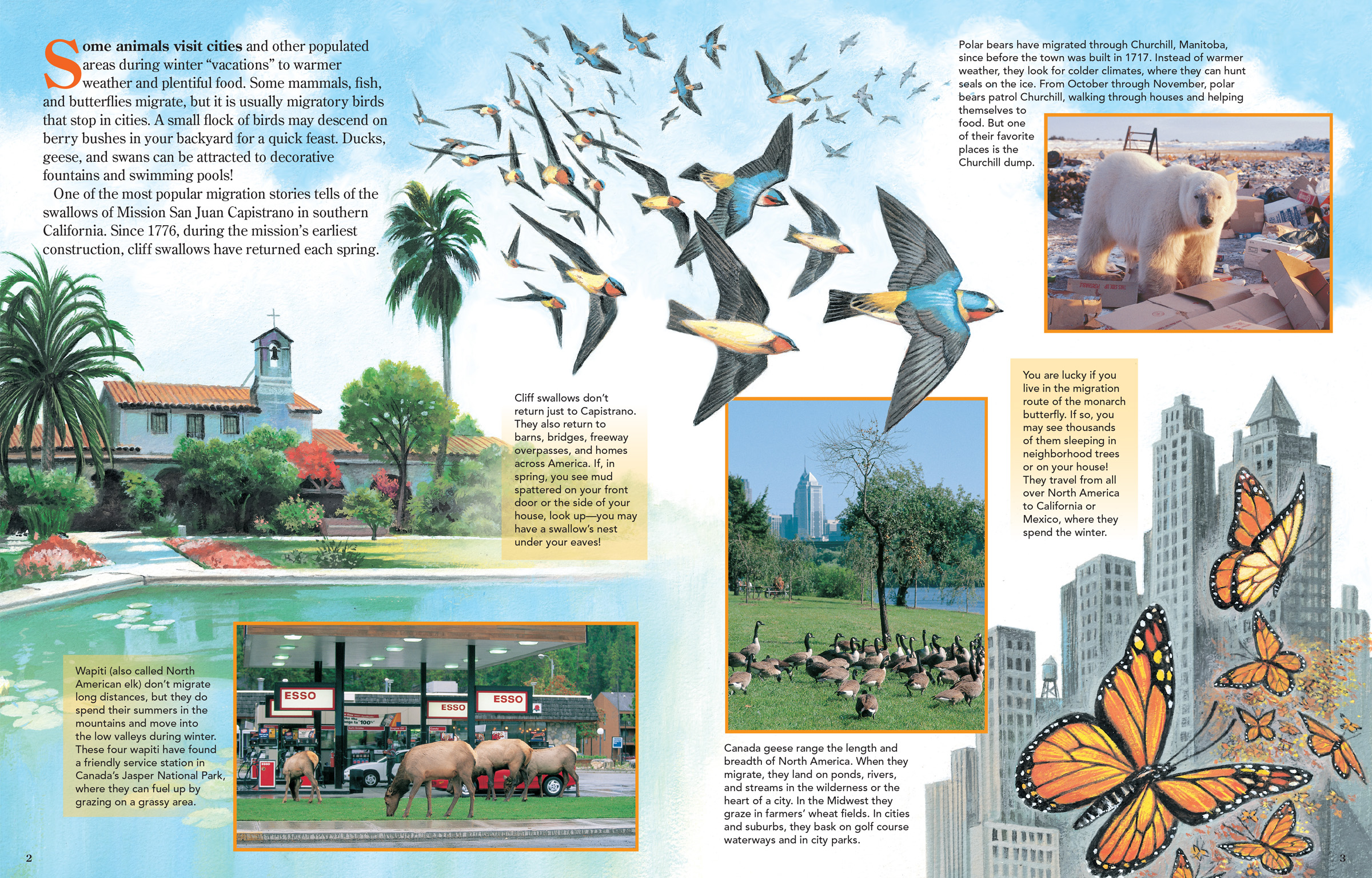
Some Animals Visit Cities While They Migrate
BySome animals visit cities and other populated areas during winter “vacations” to warmer weather and plentiful food. Some mammals, fish, and butterflies migrate, but it is usually migratory birds that stop in cities. A small flock of birds may descend on berry bushes in your backyard for a quick feast. Ducks, geese, and swans can be attracted to decorative fountains and swimming pools!
One of the most popular migration stories tells of the swallows of Mission San Juan Capistrano in southern California. Since 1776, during the mission’s earliest construction, cliff swallows have returned each spring.
 Cliff swallows don’t return just to Capistrano. They also return to barns, bridges, freeway overpasses, and homes across America. If, in spring, you see mud spattered on your front door or the side of your house, look up—you may have a swallow’s nest under your eaves!
Cliff swallows don’t return just to Capistrano. They also return to barns, bridges, freeway overpasses, and homes across America. If, in spring, you see mud spattered on your front door or the side of your house, look up—you may have a swallow’s nest under your eaves!
Wapiti (also called North American elk) don’t migrate long distances, but they do spend their summers in the mountains and move into the low valleys during winter. These four wapiti have found a friendly service station in Canada’s Jasper National Park, where they can fuel up by grazing on a grassy area.
Polar bears have migrated through Churchill, Manitoba, since before the town was built in 1717. Instead of warmer weather, they look for colder climates, where they can hunt seals on the ice. From October through November, polar bears patrol Churchill, walking through houses and helping themselves to food. But one of their favorite places is the Churchill dump.
You are lucky if you live in the migration route of the monarch butterfly. If so, you may see thousands of them sleeping in neighborhood trees or on your house! They travel from all over North America to California or Mexico, where they spend the winter.
Canada geese range the length and breadth of North America. When they migrate, they land on ponds, rivers, and streams in the wilderness or the heart of a city. In the Midwest they graze in farmers’ wheat fields. In cities and suburbs, they bask on golf course waterways and in city parks.

